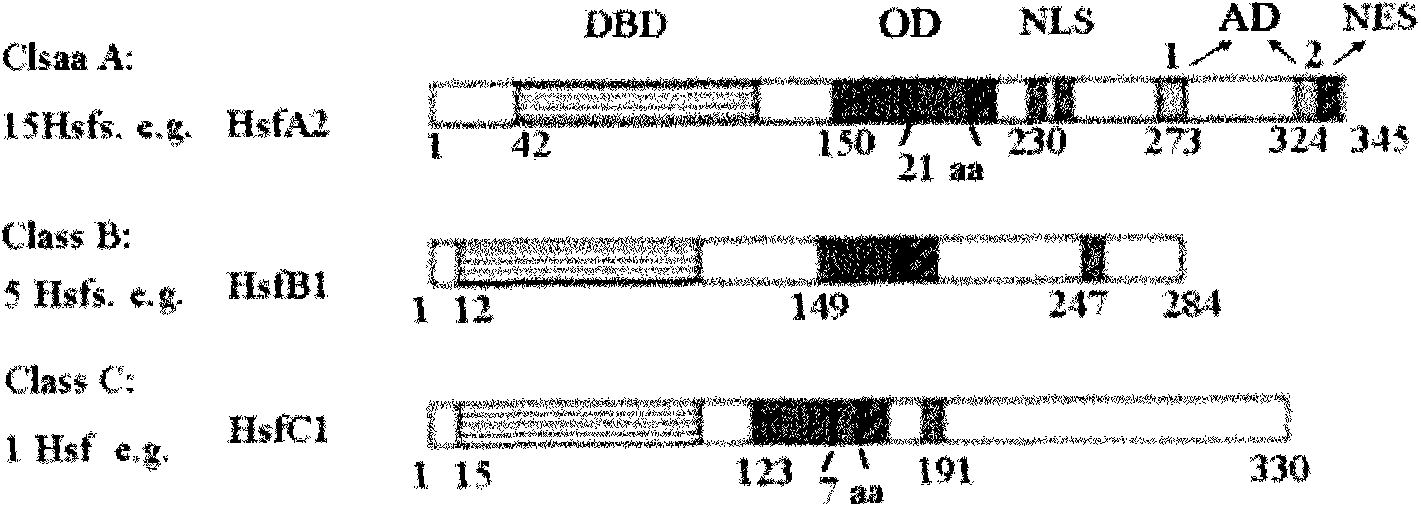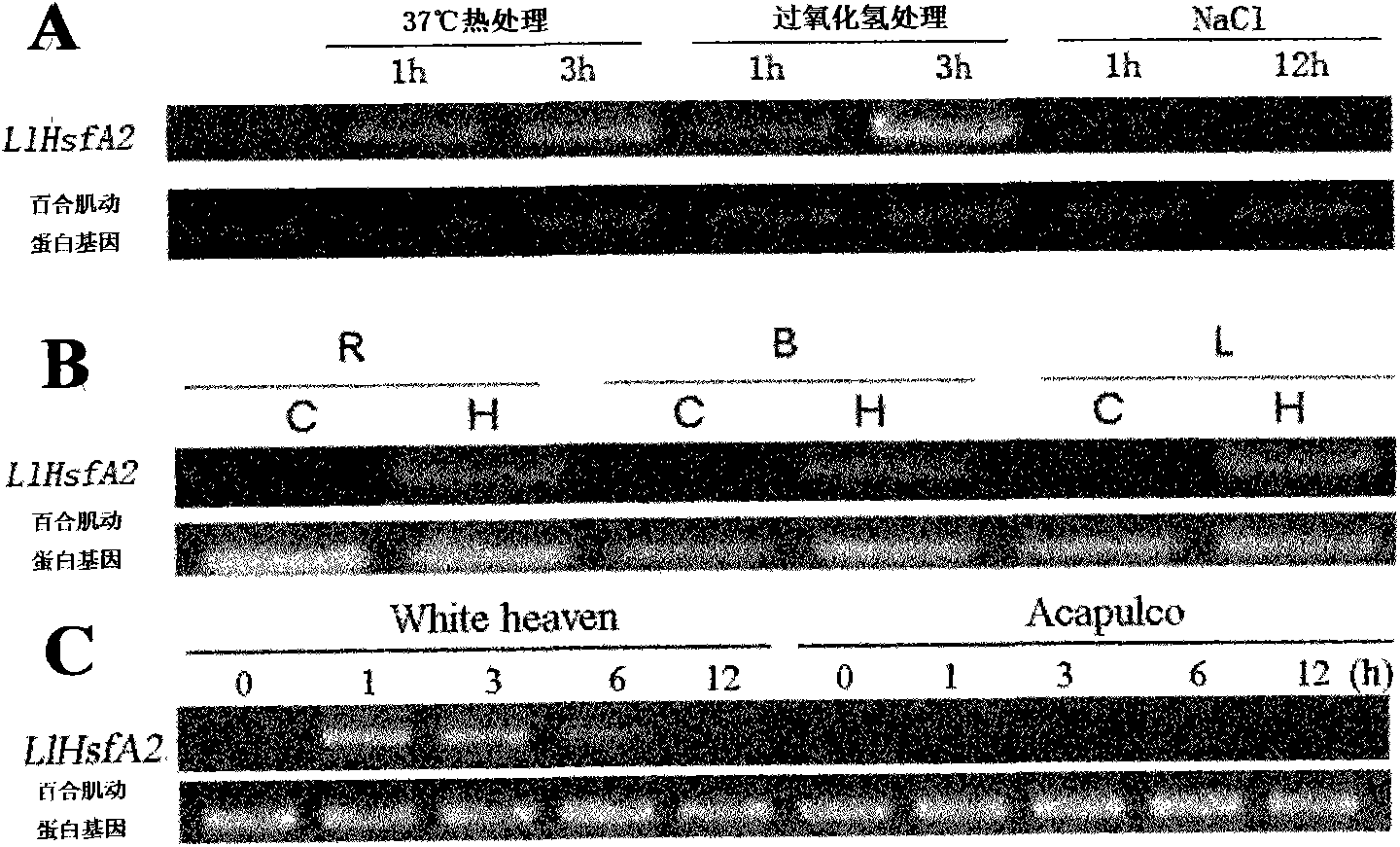Heat shock transcription factor and application thereof
A technology of heat shock transcription factor and transcription factor, which is applied in application, genetic engineering, plant genetic improvement, etc., can solve problems such as dwarfing and plant growth delay, and achieve the effect of improving heat-resistant traits and plant heat-resistant traits
- Summary
- Abstract
- Description
- Claims
- Application Information
AI Technical Summary
Problems solved by technology
Method used
Image
Examples
Embodiment
[0036] Experimental materials The seedlings differentiated from the small bulbs of Lilium longiflorum 'White Heaven' (Lilium longiflorum Thunb.var.scabrum Masamune, 'White heaven') were grown on MS medium for 30 days, and placed at 37°C for 1 hour , taking its leaves for RNA extraction.
[0038] Total RNA was extracted using Invitrogen Trizol reagent (Cat. No.: 15596-026), and the specific operations were as follows:
[0039] Specific steps
[0040] 1) Take 0.1g (grams) of fresh leaves and put them into a 1.5ml (milliliter) centrifuge tube, add a small amount of liquid nitrogen.
[0041] 2) When the liquid nitrogen is about to evaporate, quickly grind the material into powder with a pestle, add 1ml Trizol, and mix well.
[0042] 3) Stand at room temperature for 3 minutes (minutes), add 200 μl of chloroform, shake vigorously for 30 seconds (seconds), and stand at room temperature for 5 minutes.
[0043] 4) Centrifuge at 12,000 g for 15 min at 4°C, and...
PUM
 Login to View More
Login to View More Abstract
Description
Claims
Application Information
 Login to View More
Login to View More - Generate Ideas
- Intellectual Property
- Life Sciences
- Materials
- Tech Scout
- Unparalleled Data Quality
- Higher Quality Content
- 60% Fewer Hallucinations
Browse by: Latest US Patents, China's latest patents, Technical Efficacy Thesaurus, Application Domain, Technology Topic, Popular Technical Reports.
© 2025 PatSnap. All rights reserved.Legal|Privacy policy|Modern Slavery Act Transparency Statement|Sitemap|About US| Contact US: help@patsnap.com



